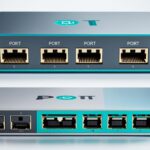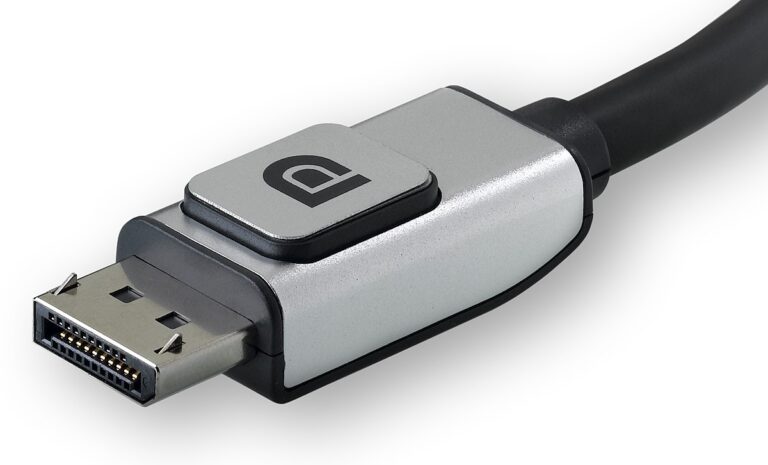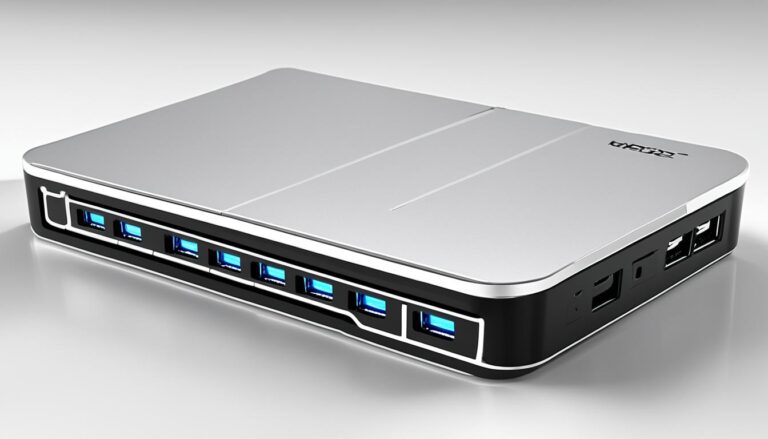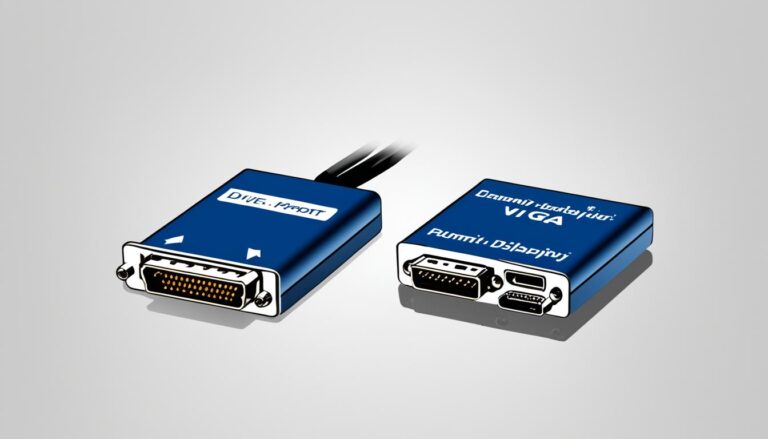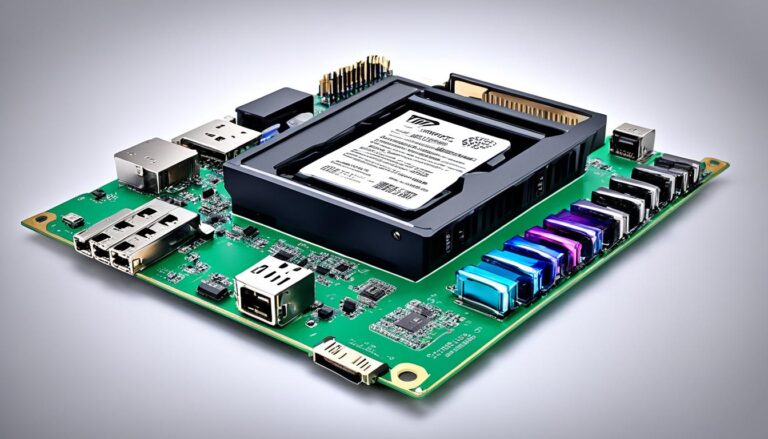The port field is vital in today’s networking world. It spans various industries. Ports are software-defined numbers that connect to network protocols. They are key in making sure devices can talk to each other. This enables devices to send and receive information effectively.
In the world of computer hardware, ports are very important. They are the physical points where devices can connect to computers. This connection lets peripheral devices, like printers and scanners, work with the computer.
When it comes to computer software, ports have a special role too. Porting is the process of making software run on different devices or operating systems. This makes software more flexible and reachable across various platforms.
Understanding the port field lets us see its value in networking, hardware, and software. It’s fascinating to see how ports help in each area. Let’s dive deeper into the significance and uses of ports.
The Role of Network Ports in Cybersecurity
Network ports are key in keeping networks safe. They help in guarding against cyber dangers. Knowing how they work is vital for protecting data and blocking unwanted access.
Port Scanning: Unveiling Vulnerabilities
Security experts use port scanning to find open ports on a network. They check each port to see which can be easily attacked. Hackers also do port scanning to find ways to enter and harm a network.
“Port scanning enables cyber attackers to identify open ports and exploit potential vulnerabilities within a network.”
Firewalls: The Guardians of Network Security
Firewalls are crucial in stopping unauthorized access. They work by checking the ports and protocols. Only certain ports are allowed to open, which helps keep the network safe.
For example, a business might set its firewall to open only a few ports. Ports 80 and 443 are for web traffic, port 25 is for email, and port 22 is for secure file transfers. This stops hackers from getting through unused ports.
The Impact of Network Ports on Cybersecurity
Network ports and cybersecurity depend on each other. Ports let networks talk and share data. At the same time, if not secured well, they can be risky. Knowing about network ports helps companies fight off cyber threats.
| Common Network Port | Protocol | Usage |
|---|---|---|
| 80 | HTTP | Web traffic |
| 443 | HTTPS | Secure web traffic |
| 25 | SMTP | Email services |
| 22 | SFTP/SSH | Secure file transfer and remote access |
| 3389 | RDP | Remote Desktop Protocol |
The table shows vital network ports, their protocols, and uses. Knowing about these ports helps in setting up strong firewalls. This reduces the chances of cyber attacks.
Understanding Computer Hardware Ports
In computer hardware, ports are places where you can connect devices to a computer. These ports let devices talk to the computer.
Some main ports are USB, USB-C, Ethernet, and DisplayPorts. USB ports connect things like keyboards and printers. USB-C ports are newer, offering quick data transfers. Ethernet ports connect computers to the internet through wires. DisplayPorts let you link to big screens or monitors.
“Computer hardware ports play a crucial role in expanding the capabilities of a computer by connecting peripheral devices and expanding its functionality.”
There are also older ports like Serial, parallel, and PS/2 ports. They were on old computers but are not common now. New ports offer more uses.
Remember, in computer talk, a port is on the computer. A jack is on a wall or another place.
Common Computer Hardware Ports
| Port Type | Description |
|---|---|
| Universal Serial Bus (USB) port | Allows connection of various peripherals |
| USB-C port | Provides faster data transfer and versatile connectivity options |
| Ethernet port | Enables wired internet connections |
| DisplayPort | Facilitates connection to external displays |
Knowing about computer hardware ports is key to hooking up devices. Using a USB port for a keyboard or a DisplayPort for a big monitor boosts how well computers work.
Exploring Computer Software Ports
In computing, porting means changing software to work on various types of hardware or operating systems. This makes the software more flexible, letting it run on a range of devices and platforms.
Microsoft has ported Windows 10 to work on Arm processors. They have also made Office available for macOS. Likewise, moving games between video game consoles is a regular activity. These efforts make software more accessible on different devices.
Conclusion
Ports play a key role in networking, offering numerous uses in today’s tech. They help in proper network communication. This is by managing data requests and connecting specific services or apps. They also boost network safety. Tools like firewalls and port scans protect against threats.
In the realm of computer hardware, ports are vital for linking devices to computers. For example, a USB port connects external storages, while an Ethernet port enables networking. Similarly, a DisplayPort links monitors. This way, ports ensure devices and computers work together smoothly.
In software, porting lets programs work on various hardware or operating systems. This improves compatibility and access. Thus, users can enjoy their preferred apps and games on many devices and platforms.
In conclusion, ports are crucial for network communications and tech applications. Understanding their importance helps in enhancing network setup, improving security, and ensuring devices work well together. This knowledge is beneficial for both individuals and companies.
FAQ
What are the main uses of ports in computing?
There are three key uses for ports in computing. They are vital in networking, essential for computer hardware, and important for software.
What is the function of ports in networking?
Ports in networking serve a unique role. They are like doors for network protocols, handling data requests. Each connection gets a unique number.
How do ports work in computer hardware?
In the realm of hardware, ports are connectors. They let devices like USBs and monitors hook up to computers. This way, peripherals connect seamlessly.
What is software porting?
Porting software means adapting it to work on various platforms. It helps software run on different devices, increasing accessibility.
Why are port numbers important in network security?
Port numbers help identify specific apps or services. They are key for allowing secure network communications. This helps in enhancing security measures.
How do firewalls use port numbers for network security?
Firewalls control access to ports that services need, blocking the rest. They use port numbers to shield against attacks and unauthorized entry.




